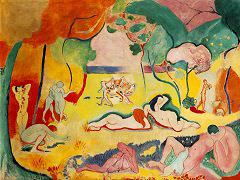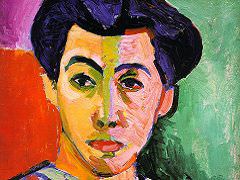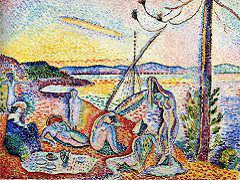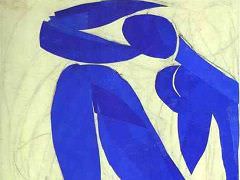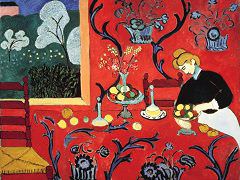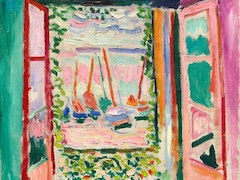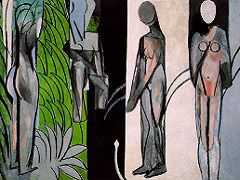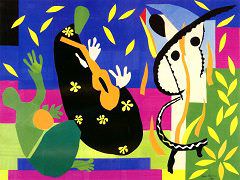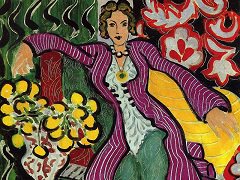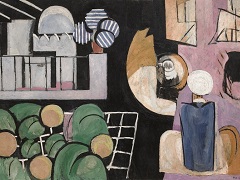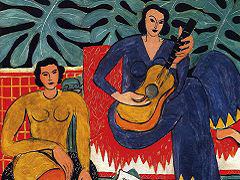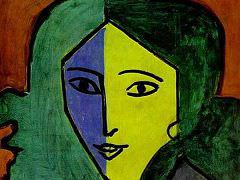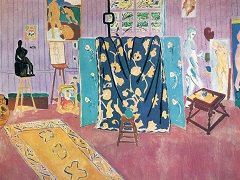Lady in Blue, 1938 by Henri Matisse
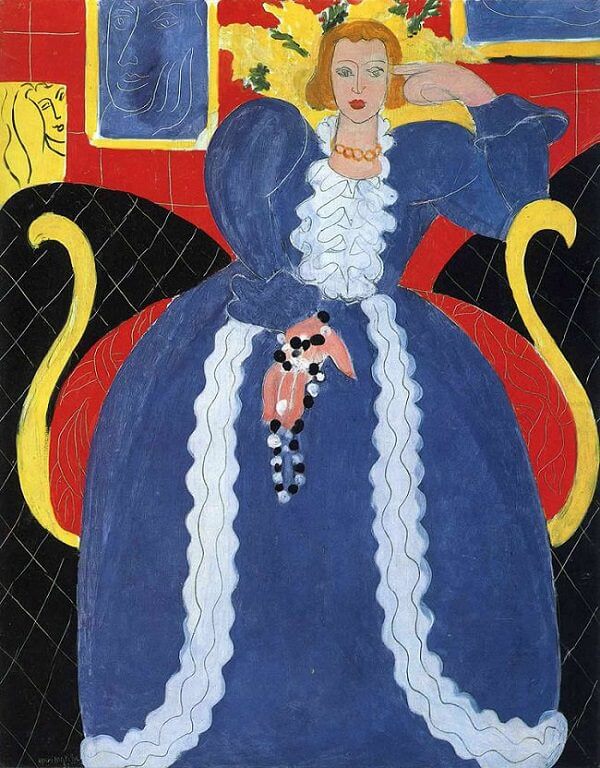
In Lady in Blue, Matisse missed the balance he had achieved. He wrote to fellow-artist Pierre Bonnard:
My drawing is what I need, since it expresses what is distinctive in my own feeling. But my painting is restricted by the new conventions of applying large zones of paint to express myself - nothing but localized colours with neither shadow nor relief, that are supposed to suggest light and spiritual space through their interactions. It doesn't go well with my spontaneity - I relish knocking off some vast work in the space of a minute."
The draughtsmanship of Lady in Blue is of an extreme precision: the fine white lines have been scratched out of the paint, the dark lines drawn with a fine brush or similar implement. These lines define the flat, expansive forms but confer no relief or depth. The woman in the long blue dress with white frills is sitting on an armchair or sofa with curlicued arm-rests like swans' necks. We cannot tell if the black area with criss-cross pattern is the floor or a part of the seat. Nor does the flat arrangement permit any spatial sense. Drawings have been hung on the red rear wall, as if to underline the significance of that medium for this painting. The linear clarity of the painting matches the absence of nuance in the yellow, red, blue, black and white colouring. The use of paint lacks the tension that would establish it on an equal footing with the drawn lines: subordinated, it almost makes an impression of cheerful colourfulness.

